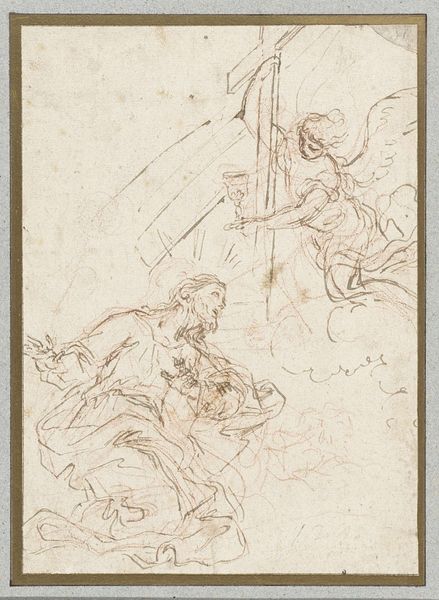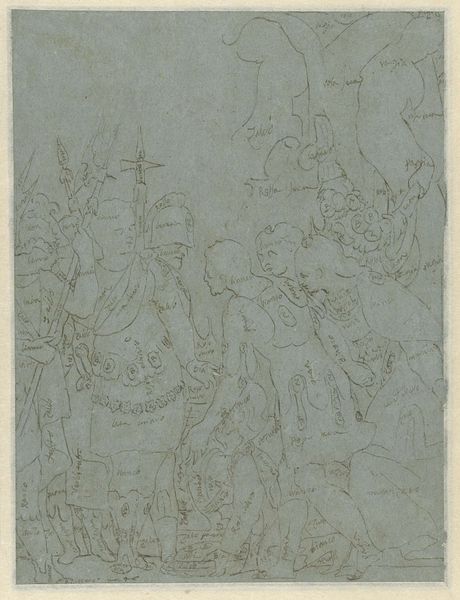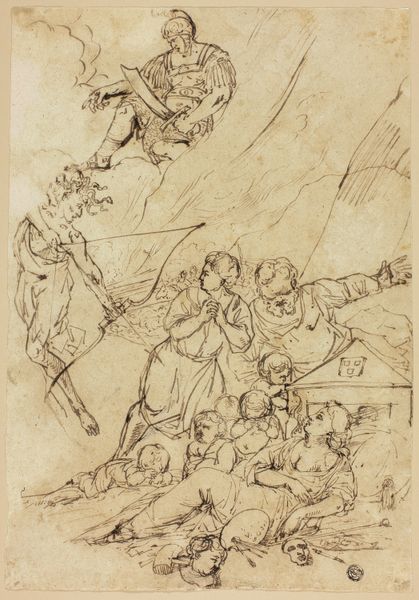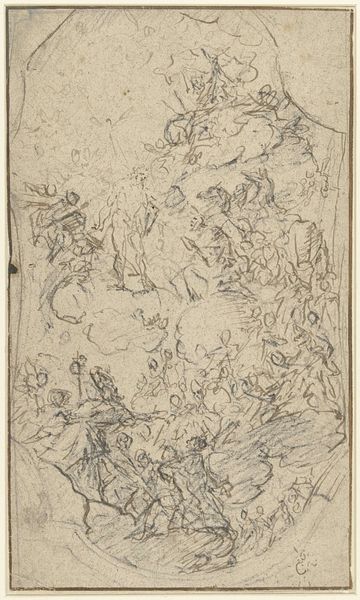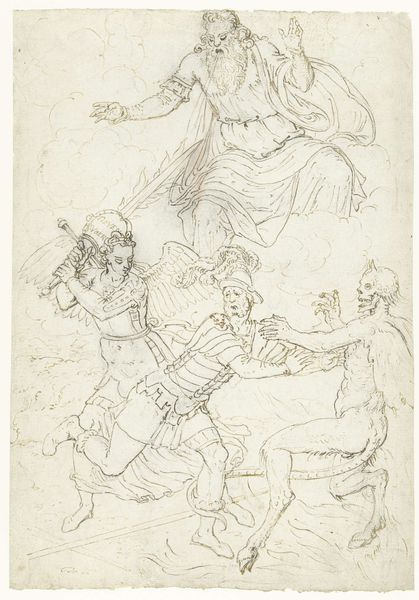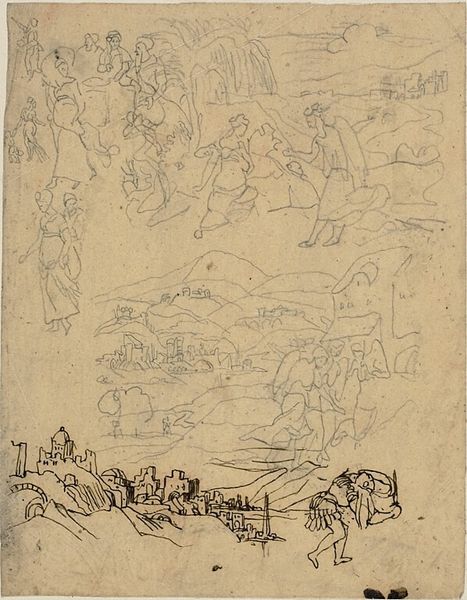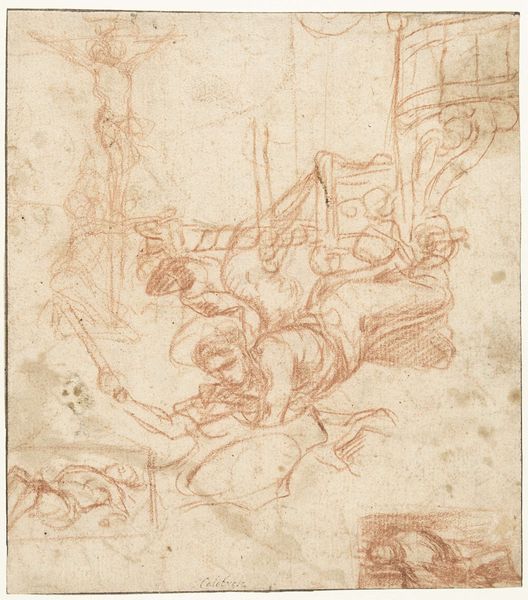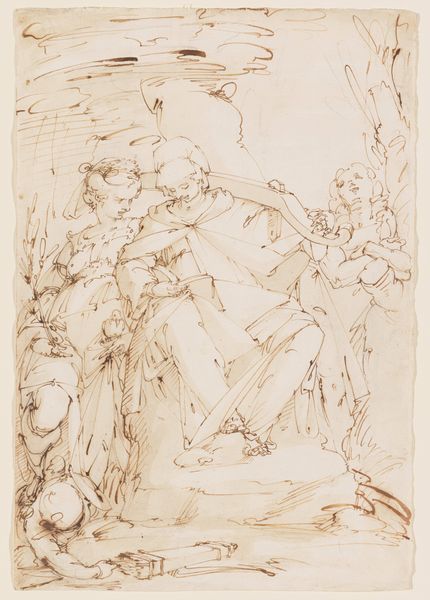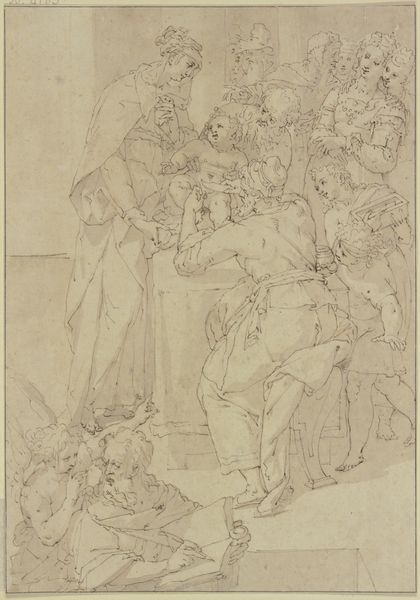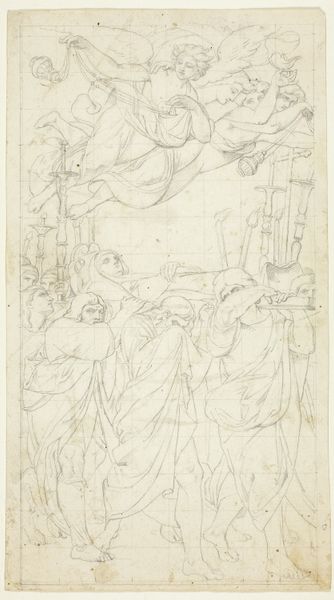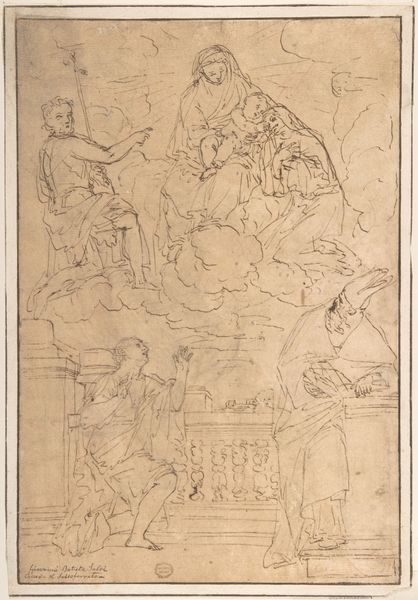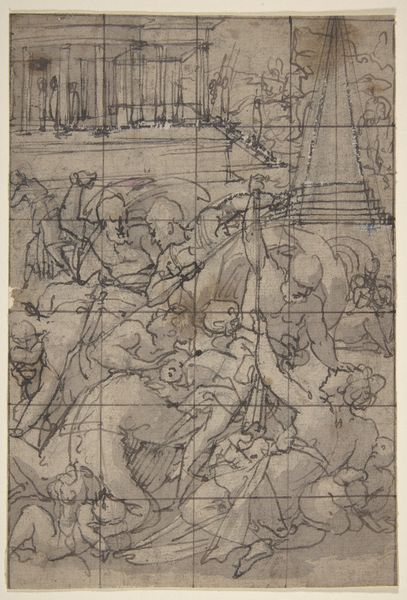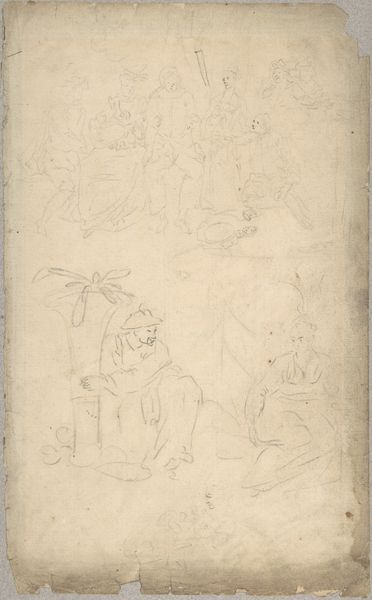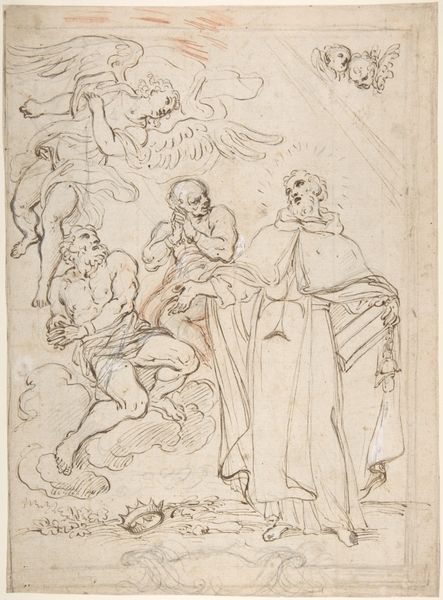
drawing, paper, ink
#
drawing
#
ink drawing
#
etching
#
mannerism
#
figuration
#
paper
#
11_renaissance
#
ink
#
history-painting
Dimensions: height 171 mm, width 106 mm
Copyright: Rijks Museum: Open Domain
Editor: This is Camillo Procaccini's "Pietà," made between 1561 and 1578, rendered in ink on paper. There's an unsettling rawness to the composition, it’s like we're witnessing an intimate moment of collective grief. How do you interpret this work? Curator: The raw emotion speaks to the political climate of the time. Procaccini creates a space to challenge societal structures regarding power and vulnerability by placing the traditionally stoic figure of Christ in a place of complete fragility, cradled by those who would normally be considered of lower status. Consider the power dynamics inherent in depicting Christ’s body—how does the artist both acknowledge and subvert those expectations? Editor: So you're saying it's not just about the religious scene itself, but also about who is mourning and their position within the social hierarchy? Curator: Precisely! Look at the varied expressions and body language. Are they merely grieving, or are they also perhaps displaying a quiet resistance to established norms by embodying care and empathy? The Pietà, across art history, becomes a potent symbol not just of loss, but of the transformative potential found in solidarity and shared pain. Editor: That gives me a whole new perspective on it. It makes the emotional impact feel deliberate. Curator: The artist uses the artistic language to convey these layered meanings. Now, how can we draw a comparison of the artist’s portrayal of emotive symbolism versus more iconic renditions? Editor: I see what you mean now. Focusing on empathy and how that is politicized helps me appreciate Procaccini's “Pietà” even more! Curator: Indeed, recognizing art’s active role in challenging socio-political contexts lets us reconsider historical art beyond the confines of a specific narrative.
Comments
No comments
Be the first to comment and join the conversation on the ultimate creative platform.
